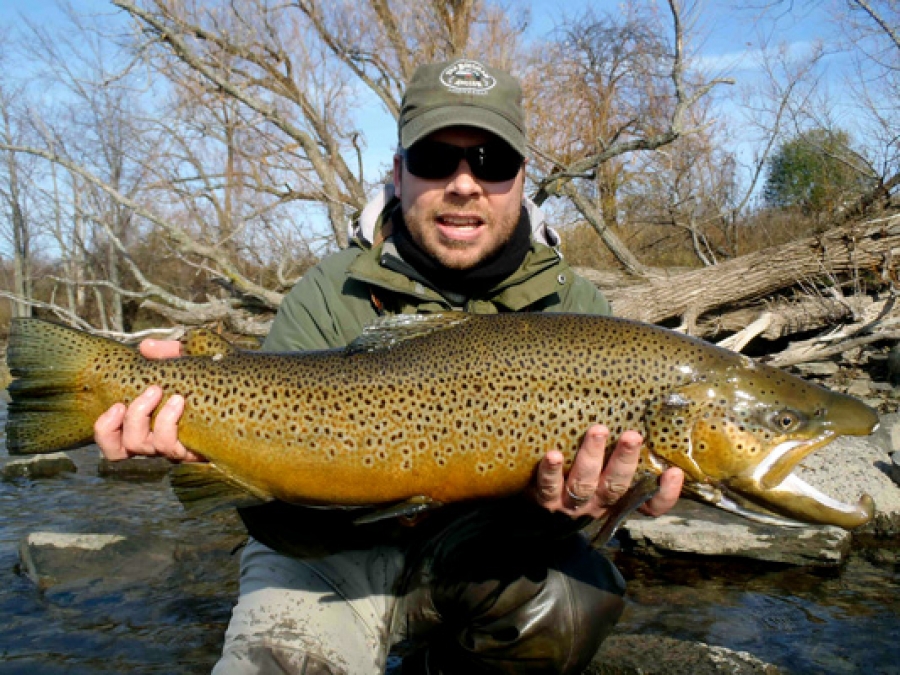9 DECEMBER 2012 NEWSLETTER
QUOTE OF THE WEEK:
Fly-fishing is the great adventure we have in a thousand little episodes. Fly-fishing is our chance to embrace the unmanufactured, to earn something honestly, and to give ourselves over entirely and passionately to a pursuit that is, in some mystifying way, both irrelevant and important.
Paul Schullery. Royal Coachman – The Lore and Legends of Fly-Fishing
A word on Paul Scullery and this book: it’s one of the most treasured I own and he is one of fly fishing’s most under-sung writers. His collected works, including Royal Coachman, Cowboy Trout, The Rise, If Fish Could Scream and Fly-Fishing Secrets of the Ancients earned him a Roderick Haig-Brown writing award and, beyond that, an honorary doctorate in Letters from Montana State University.

Royal Coachman
The book is written with exquisite sharpness and great insight, with remarkable beauty, but also with well-reasoned analysis. It is a most perceptive critique of our variously adopted poses (bamboo dark-side and many others), aspects of our literature, the role of crafts in fly fishing, the state of outdoor writing, conservation, wildness in trout – and what that means or doesn’t mean – and a lot of history, albeit that part is mainly American. In the sense that this book covers ‘just about everything important in fly fishing’, Schullery is the Bill Bryson of angling.
Would I recommend you go out and get a copy? Yes, and I’ll happily refund you if it disappoints!
The Royal Coachman
While on the subject of the Royal Coachman, the pattern though, not the book, I met the late Jack Gartside by chance in Bud Lilly’s fly shop in West Yellowstone Montana many years back. We fell into a discussion on the origins of the Royal Coachman when I had no clue I was talking to the Jack Gartside, already a legendary fly tyer. I thought the Royal Coachman was of American origin, Jack argued it was British, and we wagered a beer on it. The Royal Coachman was designed in 1878 by John Haily, a professional fly-dresser living in New York City who was working at the time for the Orvis Company. In fact the pattern was apparently named by Charles Orvis.
I enjoyed that beer, not so much because it was free, but for the fine company that came with it.
Jack Gartside was a delightful character. A cab driver in Boston, USA, he tied flies in his cab between calls. He ended up fishing all over the world, wrote some wonderful books and developed a string of innovative fly patterns for both fresh and saltwater. Happily we remained in contact for many years. His wit was extraordinary and clever. He reminded me a lot of Spike Milligan both in looks and in his quick, sometimes absurd banter. A.K. Best is quoted as saying of him, "One of the reasons I enjoyed working the Fly Fishing Shows was to spend time between gigs gassing with Jack. He always had some bit of humor to share. It helped all those listening to be aware that fly fishing and fly tying is supposed to be fun."
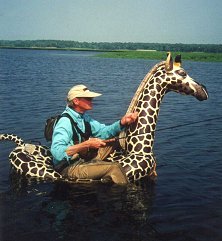
Jack Gartside. From www.jackgartside.com
For more information on Royal Coachman and Jack Gartside’s books go to Craig Thom of Netbooks http://www.netbooks.co.za
News from Mike Harker that brings on Green Fever
Mike Harker sent me this short note with half a dozen pictures from a trip to Farquhar and I admit to coming down with a bad dose of Green Fever. Mike’s note says,
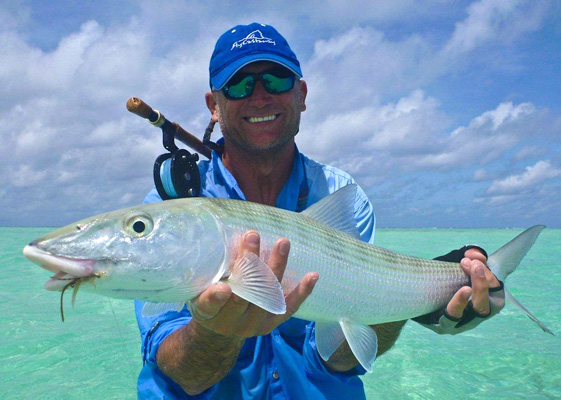
‘I have attached a few images from my recent trip to Farquhar, an unbelievable place with a lot of stories to tell. I have included a picture of a GT that ate Tim's fly and then mine, hungry bugger. I came unstuck a short while later, but Tim managed to stay stuck and landed it. This was 109cm. The biggest on fly on the flats was 138cm, an island record.’
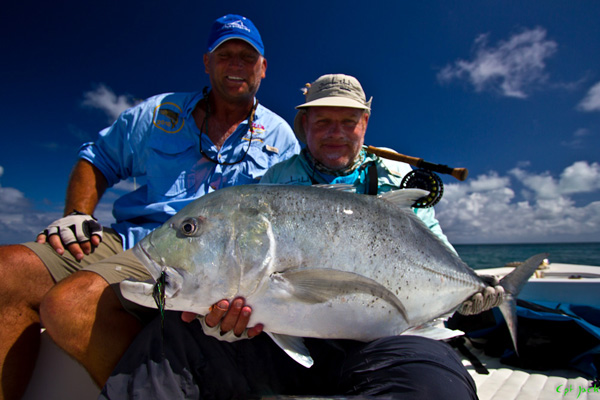
(Mike and I first started fishing together in the halcyon days of the Old Dam in KZN. In fact, he was around the famous night my old friend Hugh Huntley first tied the Red-eyed Damsel.)
News from Brent Flack-Davison!
Brent sent me the following that rapidly worsened my dose of Green’s disease:
’We just fished a tributary of Lake Ontario for steelhead and brown trout. Both these fish follow the salmon in the tributaries to fatten up on salmon eggs and spawn. The steelhead come in several runs throughout the year (including the dead of winter for the very brave), but the browns typically come around the month of November.
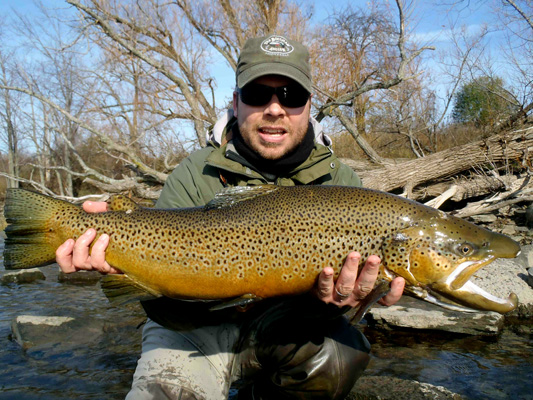
Fishing is typically done with spey and switch rods mainly fishing egg patterns or beads, or occasionally swinging flies. The switch/spey rods are more effective in mending line to get a drag-free drift, particularly fishing egg imitations.
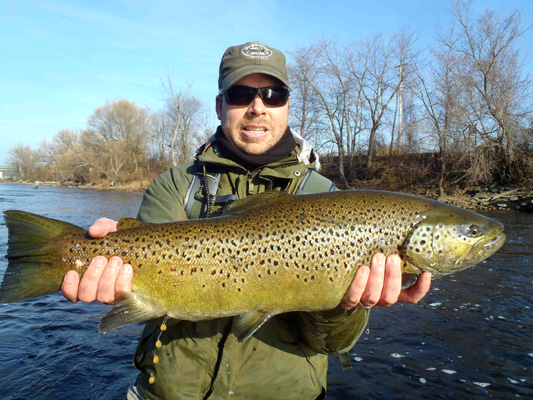
We got onto the river around 8 am (sunrise was only at 7am). Thankfully there was no snow and the day warmed up the longer the sun was out. We had a short push of steelhead in the first hour, but then we had a strong push of big browns at which time the steelhead seemed to clear out. They were feeding heavy on eggs; several fish literally had eggs falling out their mouths.

We were casting up and across and dead drifting egg imitations into holding areas as the fish were moving up upstream. The fish were fairly selective about the colour of the beads and especially selective about the drift speed.
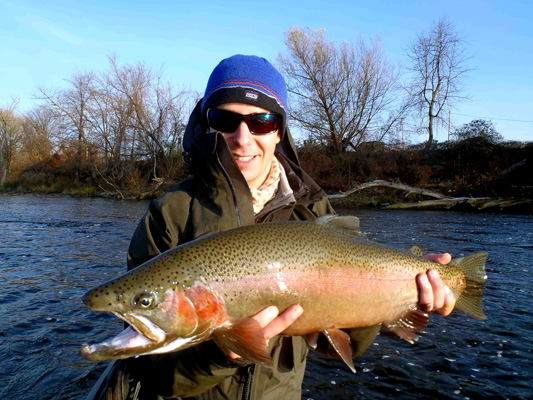
We caught mainly browns between 6-16lbs, several steelhead and a few river rainbows that looked like rugby balls. We had to follow numerous fish downstream as we were only fishing with 8lb tippet. A very lucky day to remember! Thanks again for a great newsletter.’
And on the subject of green, a classic to be restored
Basie Vosloo’s lime green Ford F 100 (circa 1978, mileage indefinite) was for years known as the fish truck to a lot of us anglers visiting his farm Birkhall in the Eastern Cape Highlands. The front seat was as wide as a church pew and by reputation the truck would get you out of any place in any weather. If the going got real steep and slippery you just kept adding rocks to the load-bed until the back wheels got enough traction to pull you out.
It was in service until a few years back when it was finally retired to a shed. The good news is that Basie intends to restore it, meaning we can now fly into Bloemfontein, rent a car at the airport and arrive on Birkhall with a fishing truck ready for use.

The F 100 at present
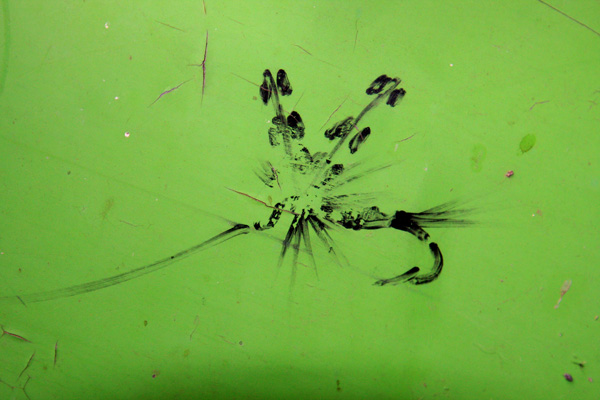
…and the door
In 2006 I did sketches of two Adams dry flies on the driver’s door using a black permanent marker. I’ll re-do the dry flies if the truck gets the new paint job, or to celebrate the occasion, maybe I’ll get bold and sketch a few leaping trout, or possibly some trout holding over pebbles.
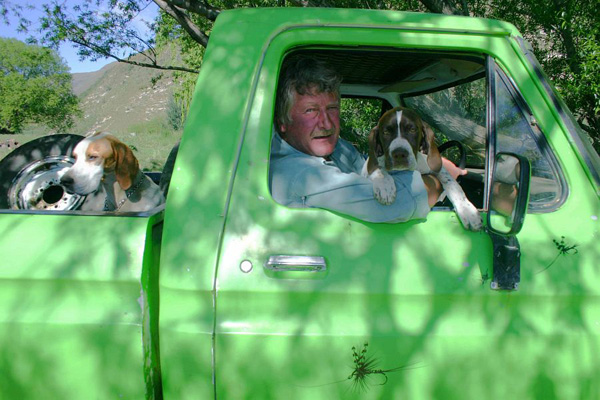
Basie and Pointers Archer (left) and Thomas (right), circa 2006
By the way, Basie says he’s prepared to swap the fish truck as it stands for a new Toyota Hilux Twin Cab 4 X 4 Diesel – with bull bars, a canopy and a full tank of fuel, of course.
Just how lucky can you get?
My better friends are well acquainted with my messianic devotion to the Catskill School of fly tying, as much for the elegance of the patterns of that period as for its fascinating history.
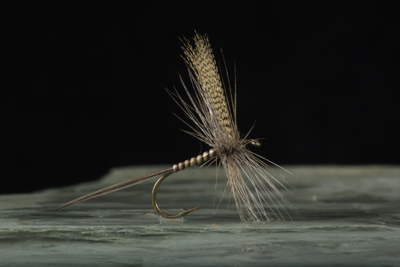
Quill Gordon typical of the Catskill style (from http://www.kossiedun.com.au/Valla_mike_flies.htm)
It’s a history embracing legends like Theodore Gordon (Quill Gordon), Roy Steenrod (Hendrickson), Harry and Elsie Darbee and Walt and Winnie Dette and their daughter, Mary Dette Clark (to name a few). I had all the main works on the Catskills in my library with one notable exception – Eric Leiser’s The Dettes – A Catskill Legend.
Well, I went fishing a while back with a friend, Johan Ferreira, on a Cape mountain stream when we didn’t see any snakes, caught some fish and generally had a good day. Johan mentioned that he had a copy of Leiser’s Catskill book that he never used and would send to me. It was the sort of gesture that gets you excited for a week or two but when no book arrives you soon enough forget about it. Which I did.

But this week I received a parcel in the post. It was a copy of The Dettes – A Catskill Legend in perfect condition with a note from Johan apologising for taking so long to send it! It was a wonderful gift and if it had ended there it would still have got a mention in my newsletter.
But when I opened the book I found it was signed, not only by the author, Eric Leiser, which was wonderful, but also by Walt and Winnie Dette and Mary Dette Clark! Life doesn’t get more goose bumpy than this!

So, eat your hearts out Paul Curtis, Tim Howes, Clem Booth, Len Olyott and all the other fanatical angling bibliophiles I know!
By the way, the best modern book on the subject of the Catskill School in my view is Mike Valla’s brilliant work, Tying Catskill-Style Dry Flies.
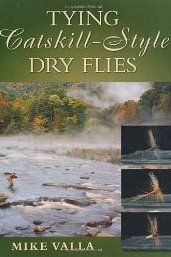
Jan Malan on the unforgiving Witte
Says Jan;
‘Unfortunately, the Holsloot was closed for fishing on the day I had free, so I had to opt for the Witte. The river was looking good, but I suspect as a result of the front that was still around the fish were just not there and we didn’t see a single rise the whole day.
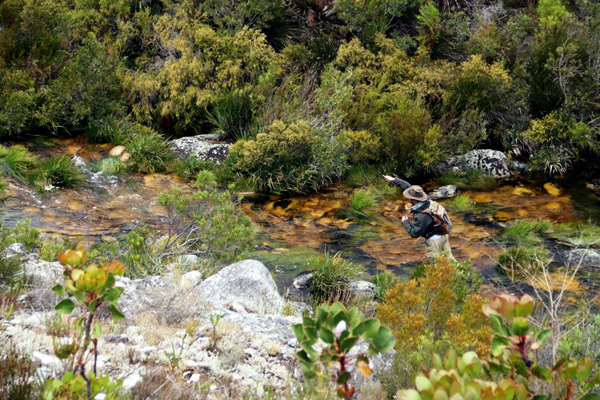
I had only one chance in very shallow water with an outsize fish (Lord knows what he was doing there), and it actually took the nymph but I was too slow and could only watch as it circled six feet away for a while before disappearing. Got some nice shots though.’
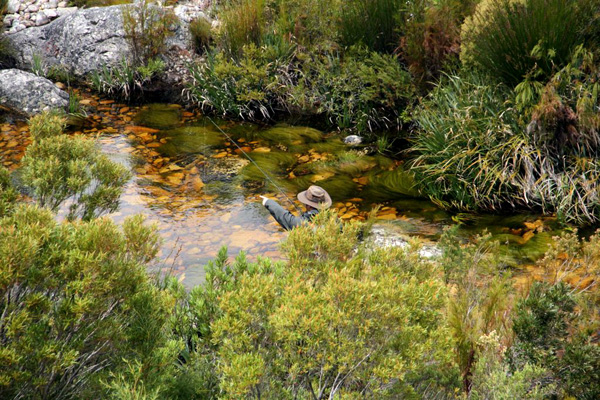
A picture says a thousand words
(The Witte, a brown trout stream, is one of the prettiest – and one of the most difficult – trout streams in the Western Cape. It runs in the mountains above the town of Wellington. TS)
Stanton Hector searches for a visible, easy to tie CDC Micro caddis pattern
Says Stanton,
‘There has been a lot of talk of caddis patterns lately in various forums, especially Tim Rolston who has been advocating the use of his biot wing paracaddis for some time. Having fished the Elandspad recently we noticed hundreds of tan caddis flies scurrying over exposed rocks. The trout were tricky to fool and only took patterns closely resembling these naturals.
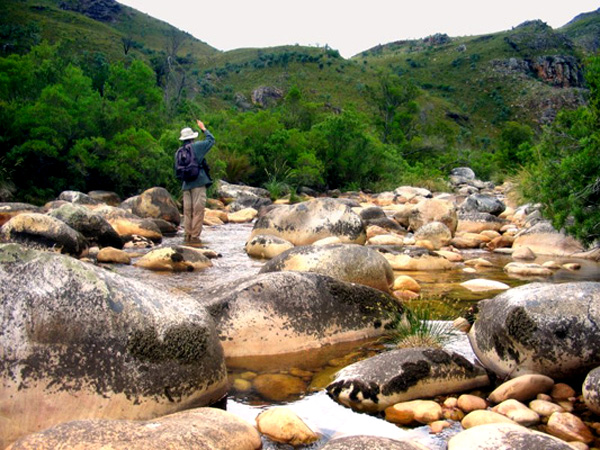
Typical Elandspad water
Luckily I had some size 20 CDC caddis patterns in my box which seemed to do the trick. These flies, however, were difficult to spot in riffle water and would often get submerged. On my return I decided to concoct something a little more visible that could be tied in smaller sizes too. I wanted something easy to tie that also had some sort of trigger as I observed the naturals had some iridescence when light bounced off them at certain angles. I decided on a CDC version of Tim's paracaddis. Parachutes are great and in minuscule sizes can be spotted for some distance. Instead of goose biots wings I settled on CDC fibres stripped of the quill and tied in behind the parachute post. I also added two strips of Krystalflash over the CDC wing to mimic the iridescence.

I have not yet fished these flies, but I'm certain they'll work a charm. The new website looks great by the way. Keep up the good work!
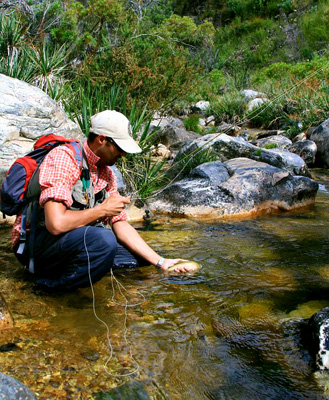
Stanton on a trip we did earlier this year
Interesting pattern. I suggested to Stanton that he look at the Bubble-winged Caddis, an equally intriguing fly. To see it tied follow this link:
http://wn.com/fly_tying_with_hans_cdc_bubble-winged_caddis
(Stanton and I have fished Cape streams together for a few years. He is on the brink of getting a PhD in science. TS)
Tom Sutcliffe

